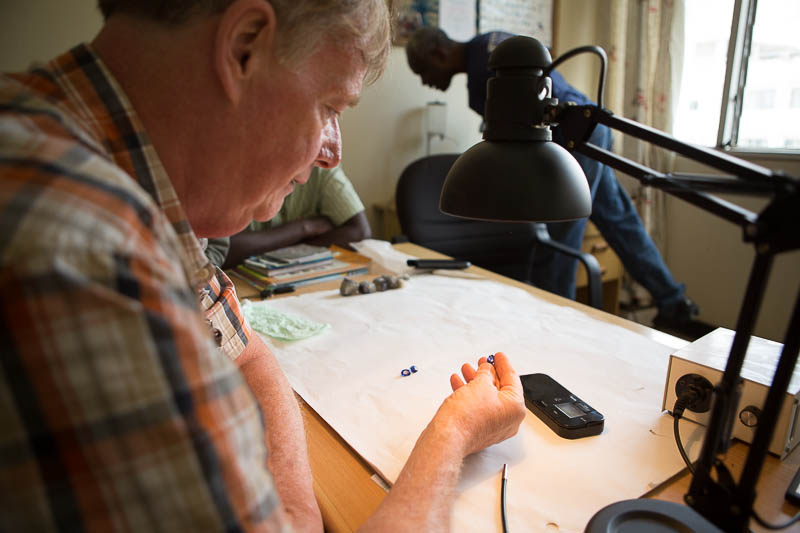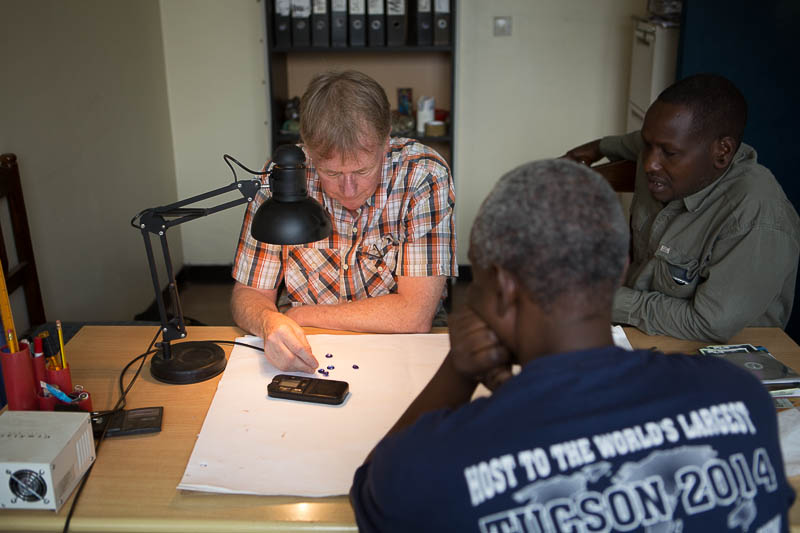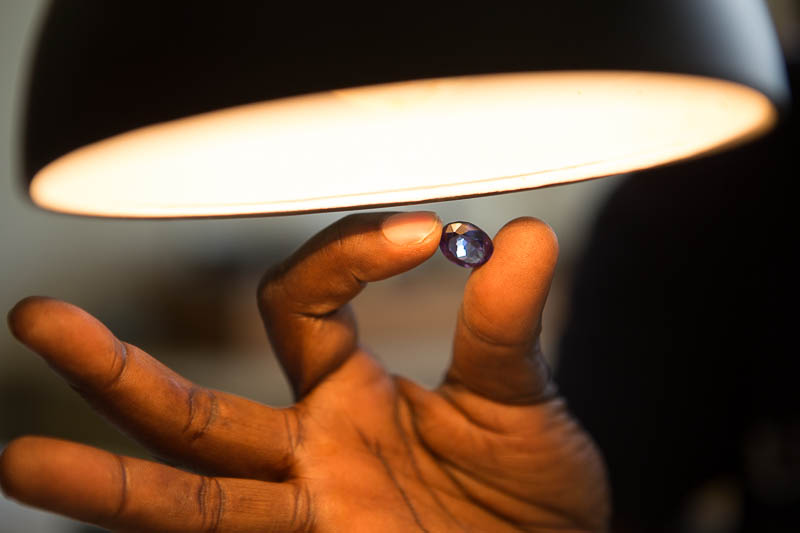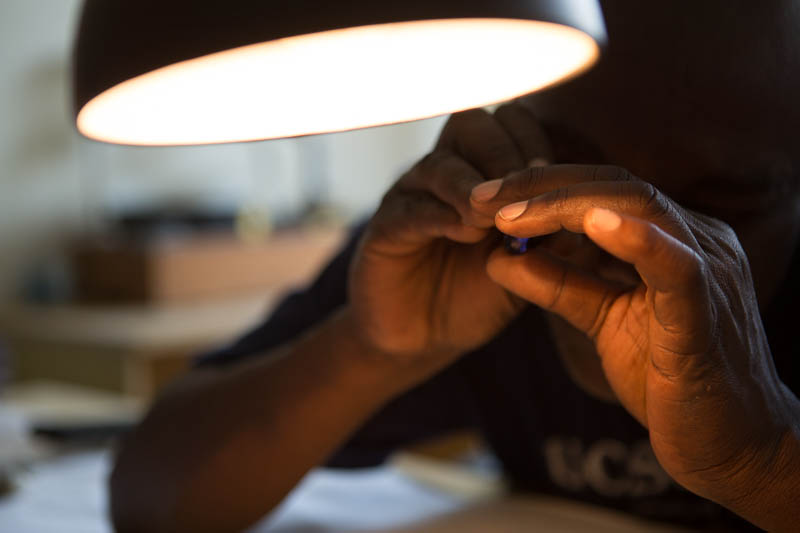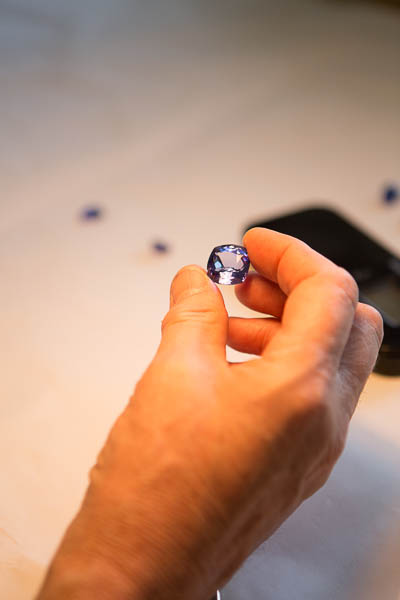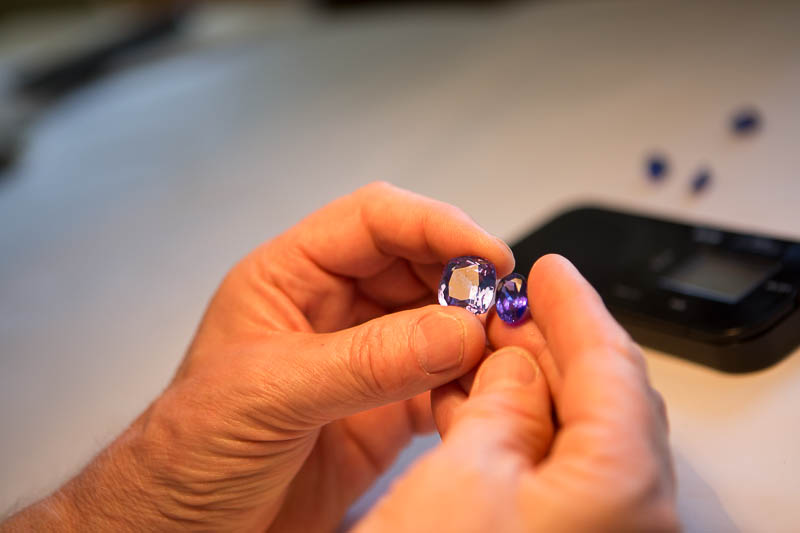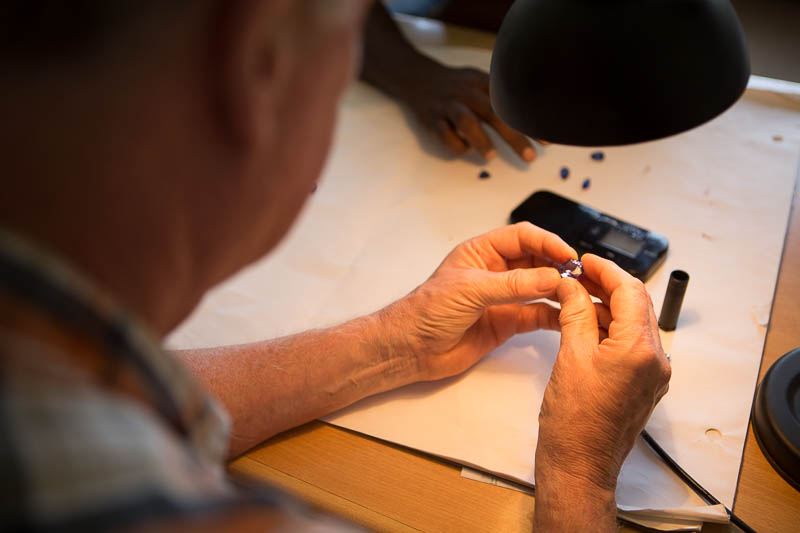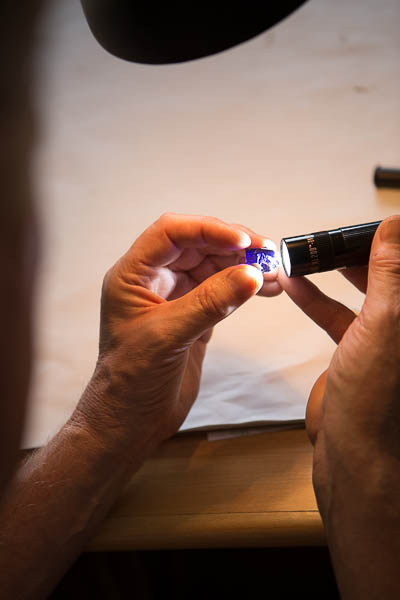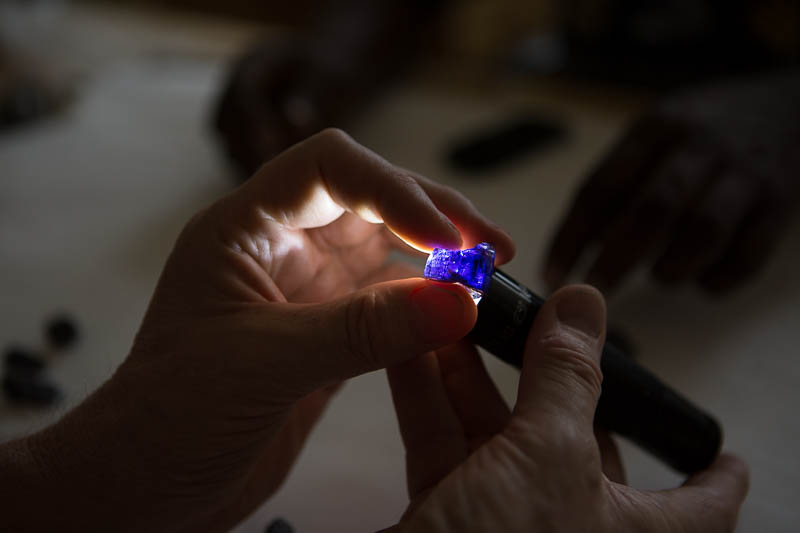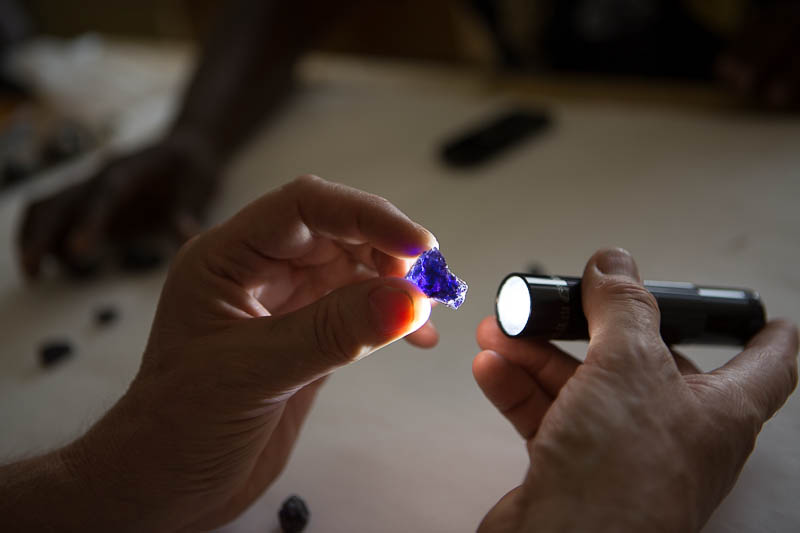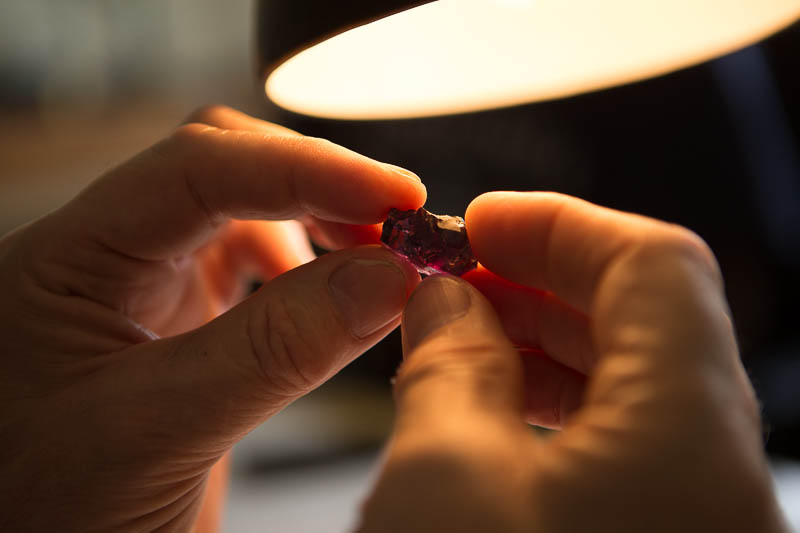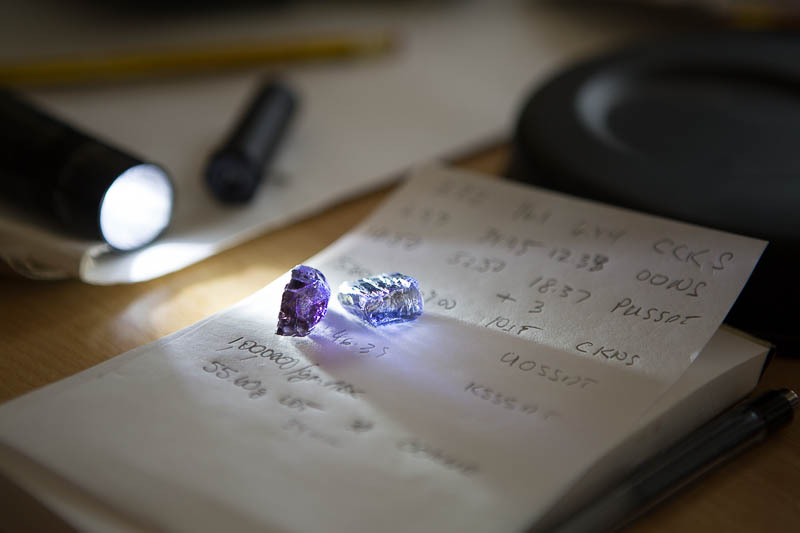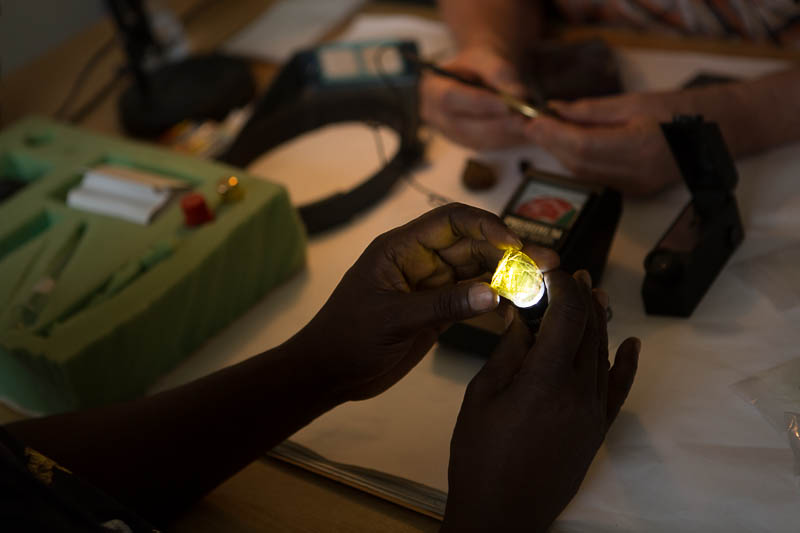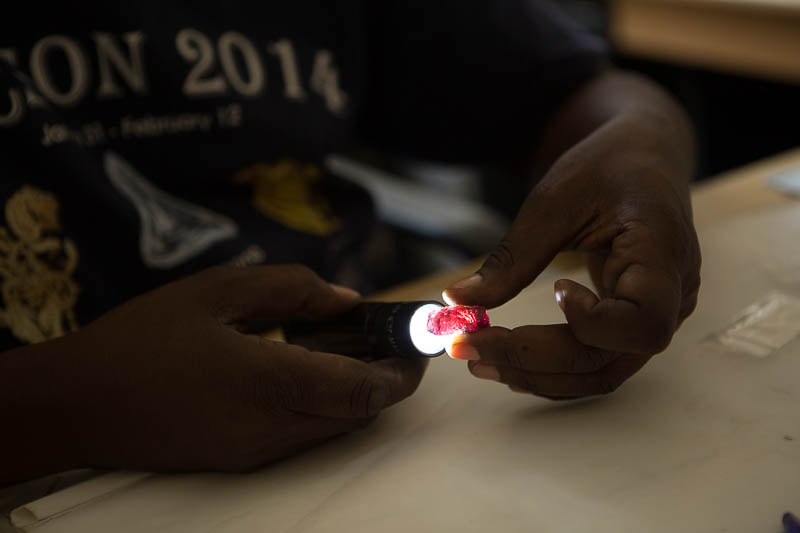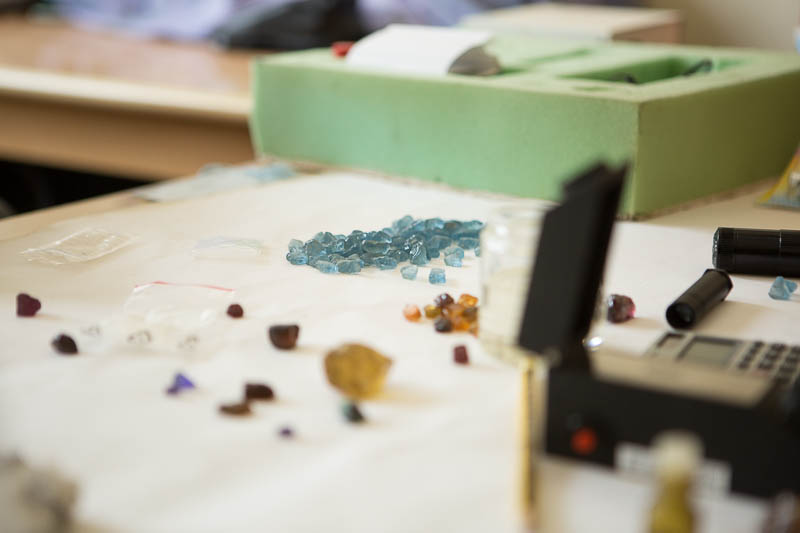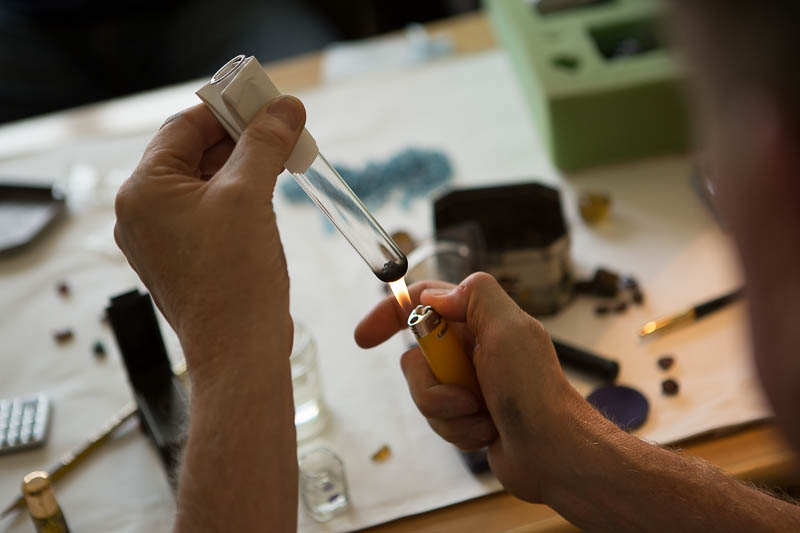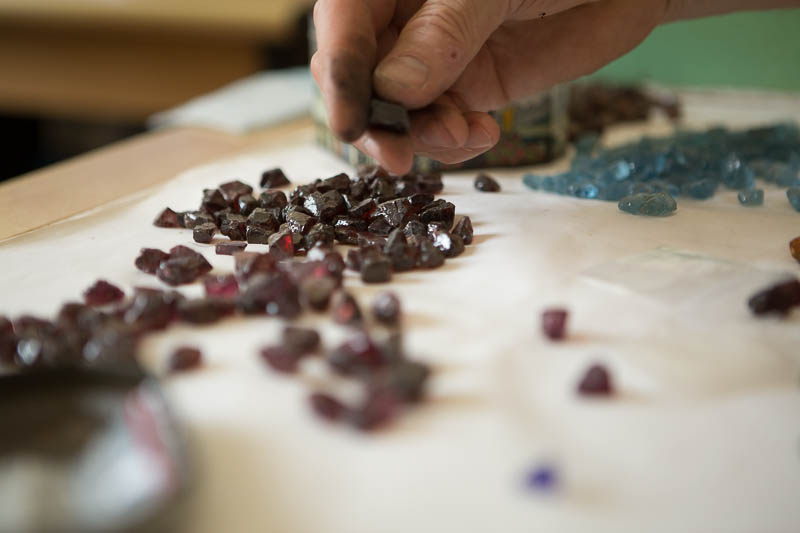Yesterday, we had the opportunity to get up close and personal with the mining process. If you didn’t get a chance to check it out, you can do so here! Today, I got a view into the business end — the buying process.
Like usual, we started off the day with some breakfast at the hotel, and then headed into town for a coffee. After fueling up, we walked across the street to Sune’s office. Sune (pronounced sue-nee) is our contact here in Tanzania. He is the owner of the mine that we explored yesterday, as well as the wonderful gentleman that has been driving us around and taking care of us while we’ve been here. Being that Sune is a local mine owner and gem dealer, you can imagine that he has quite a few contacts in the industry. Sune was able to set us up with another local dealer to check out what he had to offer.
The buying process is really pretty straight forward, and mostly what you might expect. Before even setting up a meeting, the dealers are contacted and made aware of what the buyer is interested in purchasing. If the dealer has anything to offer in that category, they move forward and end up getting together to check out the stones. If the buyer likes what they have to offer, the negotiations begin and a deals is agreed upon (…or not). This is basically the process in a nut shell, but there are a few twists that we’ll get to in a moment.
Steve’s highest priority on this trip is to seek out Tanzanite. Tanzanite is best known for its beautiful purple and blue colors, which alone are enough of a reason to seek out these beautiful gems. In fact, Tanzania actually happens to be the ONLY place in the world that produces this type of gem (starting to pick up the relationship between the name of the gem and its home?). Tanzanite cannot be found in any other mine on the planet. Here’s Steve checking out the dealer’s first offerings of these amazing gems.
When purchasing stones (gems), they are sold in two different forms — rough and cut. When you purchase stone in the rough, you are purchasing the stone directly from the mine in its natural form, without and cutting, polishing or any finishing touches. Purchasing cut is purchasing as a “final” product. These first stones, as you can see, are offered as cut stones.
As mentioned above, stones are also offered in the rough. For many jewelers with as much experience as Steve, these types of pieces are often preferred. Often times, even when purchasing cut, finished pieces, the cuts are not done correctly and will require a reworking if you want to have a perfect piece. If a gem requires to be recut, you are going to lose at least 20% of the stone’s total size, right off the bat. Steve, being a master at cutting, shaping and polishing his own pieces, often times prefers to do the work himself and ensure that the gem is as perfect as humanly possible.
This is a wonderful example of the brilliant colors that Tanzanite offers.
As with most stones, there can (and will) be color variations from one stone to the next. This is one thing that makes every stone unique from the next. While most pieces of tanzanite are shades of blue and purple, some of them even contain shades of red, as seen below. According to Steve, this particular stone is extremely rare to see and is quite an impressive piece.
A few of Steve’s note and some pieces for consideration.
As I mentioned near the beginning of the post, sometimes buying isn’t completely straight forward. Its not always as simple as picking out the stones you want and getting rid of the rest. In fact, this was exactly the case here. After spending quite some time examining the handful of pieces up for offer, checking for inclusions (imperfections), color quality and many other things, Steve wound up deciding on 3 or 4 of the top pieces of Tanzanite. Once it came down to talking price, the dealer mentioned that he was not actually interested in piecing them out, but instead selling them as a complete package (or parcel, as they call it). While this was unsettling, apparently, this kind of selling is actually quite common. Typically this tends to happen when the market it tight. When there aren’t as many pieces of a particular stone around, people aren’t as willing to get rid of them piece by piece. If they were to do so, they wind up selling all of their best and are stuck with their worst. If they are to sell them in a group, they are guaranteed the sale, which tends to be higher this way than trying to sell the poor quality pieces on their own.
Unfortunately, once it came down to the final cost for the entire lot, the final asking price was a bit high. As much as he hated to pass on the pieces that he wanted, it wasn’t going to be worth buying the entire lot. Unfortunately, this is simply part of the process. Considering this was only day 3 of 14, Steve was (is) optimistic that we’ll come across another great find very soon!
Once we finished with the dealer, it was time for Steve and Sune to catch up on Sune’s gem stock. To me, it seemed like they were more so just “playing” than working. 🙂 There were a few pieces that Sune had acquired recently that still needed to be identified. Steve having so much knowledge in the field, he was able to show Sune a few tips and tricks on how to identify different types of stones. He was using all types of tools — one that measured conductivity, one that measured refractive index of the stones, and others that were simply jars of solutions that allowed the outer surface of the stone to visibly “disappear,” allowing you to view the actual inner structure of the crystals. I felt like I was back in science class again. Super cool stuff!
Another trick that Steve tried out was a method of heating the stones. When heated properly and to a particular temperature, the physical color of the stones can actually change. Sometimes this will simply lighten or darken the color, and sometimes it will change it completely. There was a red gem that he was testing that actually changed to a peach color after heating.
All in all, this was a very interesting experience! I learned ton about gems, buying, selling, importing, exporting, and all kinds of things that I would have never imagined I would know in this lifetime. Super fun stuff!

